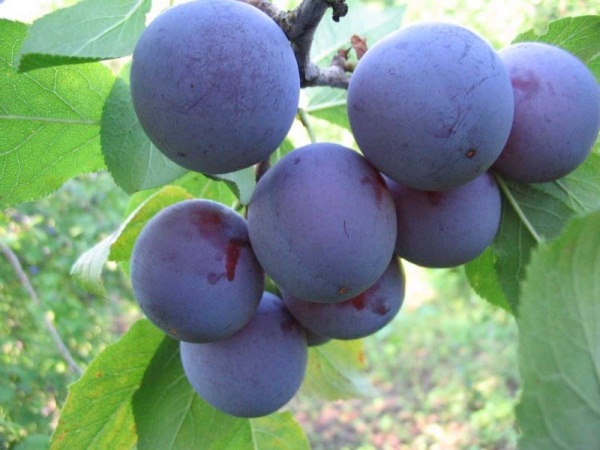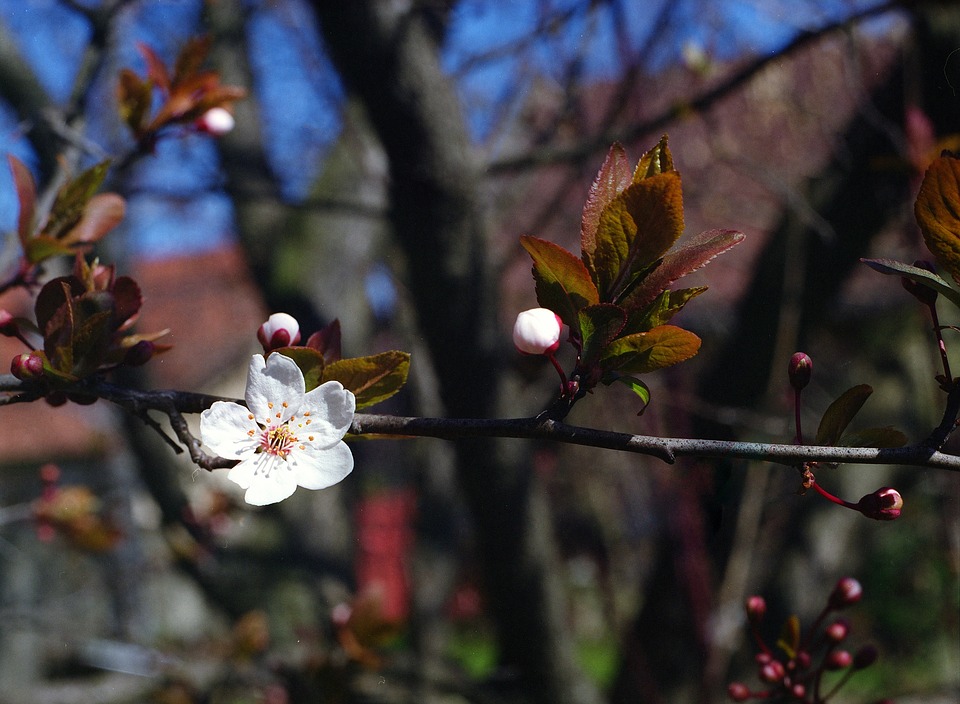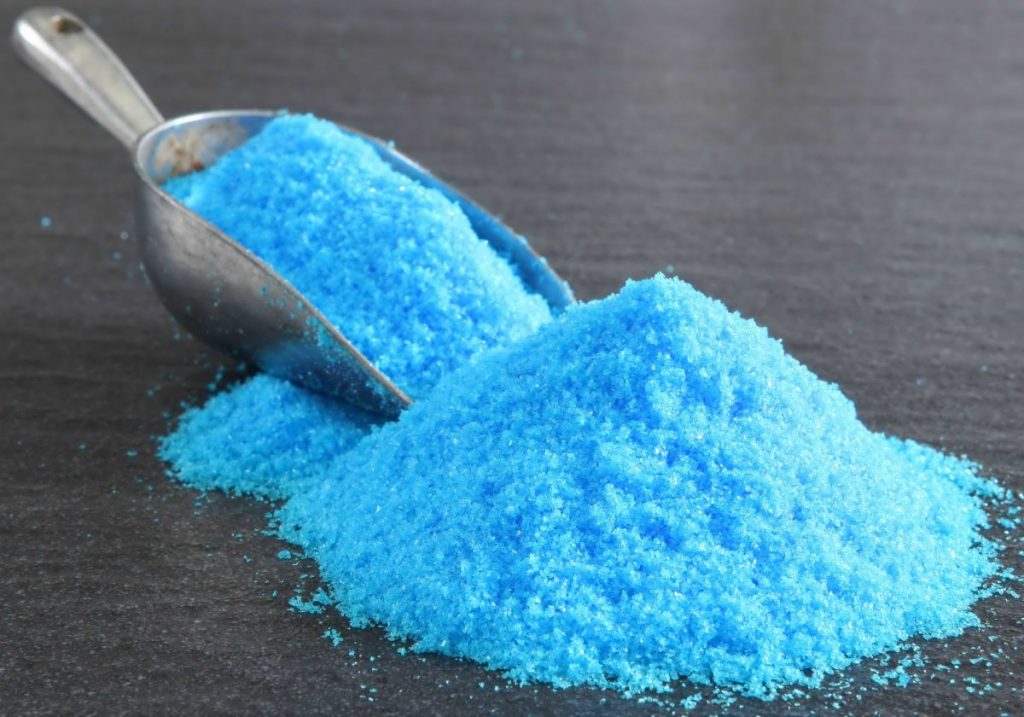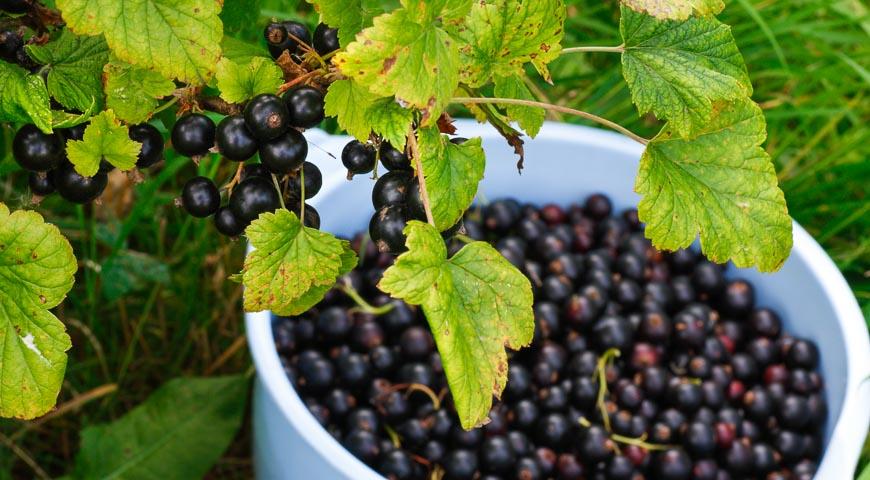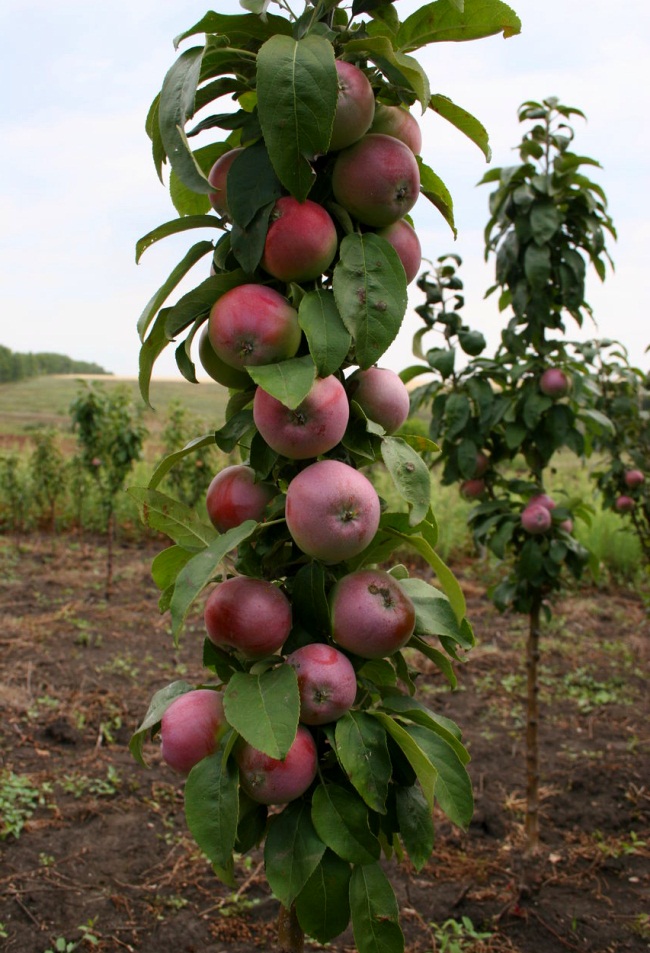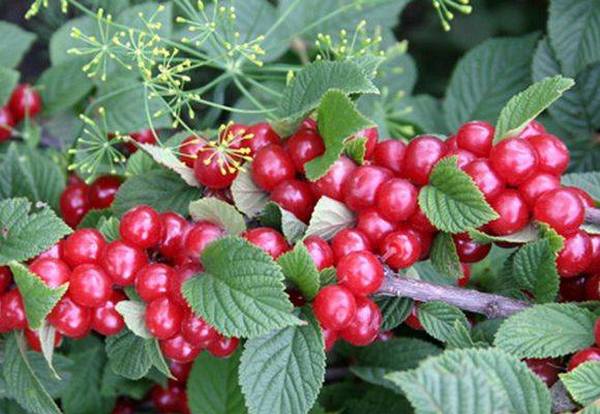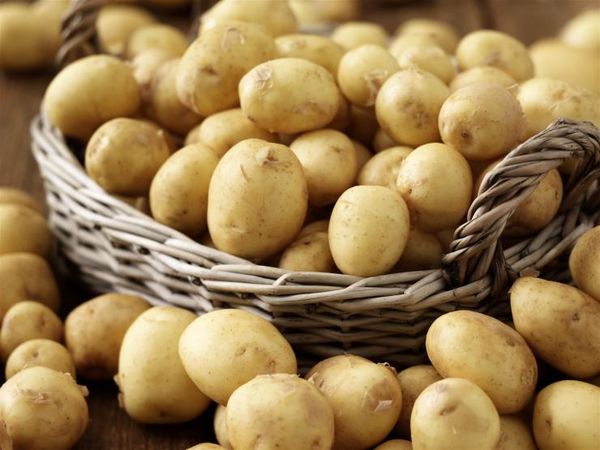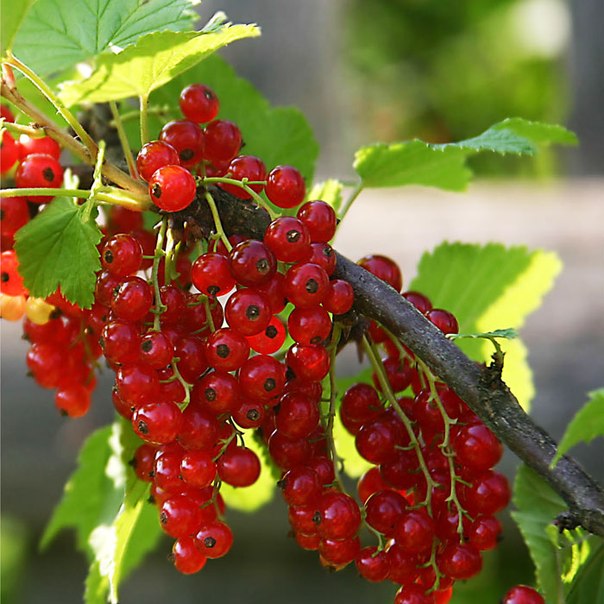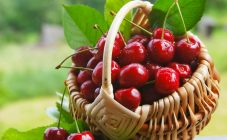Content:
Plum is a popular horticultural crop that is widely grown in Russia. It is believed that it appeared by natural hybridization of blackthorn and cherry plum. This happened most likely in the Caucasus. Here local farmers began to grow plums. Then it spread to other countries.
Fruit crops came to Russia from two sides at once - from the North Caucasus and through the countries of Western Europe, from where in the 17th century. breeding varieties were introduced.
The best plum varieties for the Moscow region: TOP-10
The climate near Moscow is not suitable for all types of plums. In winter, the air temperature often drops to extreme values (-30 ° C and below). Therefore, the plants grown here must be frost-resistant. Also, the climate of this region is characterized by frequent return frosts. It is necessary to choose species that are resistant to cold weather. Otherwise, you can completely lose the crop, because the fruit buds will simply freeze out.
Self-fertile varieties for the Moscow region
The best self-fertile low-growing plum varieties for the Moscow region, which are adapted to the local climate, are:
- Blue bird - mid-season, high-yielding (up to 35 kg). The tree is vigorous, begins to bear fruit in 5-6 years. Large fruits (up to 30 g). The pulp is juicy, very tasty. According to gardeners' reviews, the Blue Bird plum is one of the best of its kind. The only negative is a very spreading crown. Therefore, the tree needs a lot of free space.
- Bryansk late - the tree is medium-sized (up to 4 m), consistently bears 15 kg of fruit per season. Fruits weigh up to 20 g. On fertile soils and with good care can reach 30 g. Ripen in mid-September. The taste is sweet, sourness is present in the skin.
- Memory of Timiryazev- medium late, high-yielding (up to 25 kg). The early maturity is good, the plums appear in 3-4 years. The tree is of medium height (about 3 m). Recovers quickly after being damaged by severe or prolonged frosts. Fruits are medium (up to 30 g) with a waxy bloom, similar to apples in color. The pulp is medium-term, there is a slight sourness in the taste.
- Early ripening red- early maturing, high-yielding. With proper care, it produces up to 50 kg of fruit. Fruits are small (up to 15 g), slightly pointed. The pulp is dryish, the taste is sweet and sour.
- Egg blue - mid-season, consistently productive (12-15 kg). The tree is tall (up to 6 m), bears fruit up to 30 years. The fruit has a characteristic egg shape, covered with a thick waxy coating. Average weight - 30 g. Easily withstands significant temperature drops (up to -35 ° С). The pulp is juicy, sweet and sour.
The excellent characteristics of these varieties have been confirmed by many gardeners of the Moscow region.
Self-fertile varieties rating
It should be said separately about varieties that do not have the ability to self-pollinate flowers, but demonstrate good resistance to adverse factors.
Brief description of varieties:
- Greengage collective farm- medium late, high yielding. A definite plus - with age, the tree bears more fruit. After 10 years gives over 50 kg. Plums are small (about 15 g).The pulp is light green, sweet, with a slight sourness.
- Smolinka- tall (more than 5 m), begins to bloom for 2 years. The yield is stable (up to 25 kg). Fruits are large (up to 40 g), oval with a bluish bloom, ripen at the end of summer. The taste is pleasant, sweet and sour. This variety makes excellent prunes.
- Yakhontova- early ripening, partially self-fertile, tall (up to 5 m). Demonstrates good yield indicators - up to 50 kg per season. Fruit weight - up to 50 g. The taste is pleasant, sweet and sour. 5 points on the tasting scale.
These varieties are loved by many gardeners for consistent and high yields.
Coloniform plum: varieties for the Moscow region
It is worth highlighting the columnar plums. These plants are ideal for small areas. They do not have lateral branches, so they can be placed very compactly. Low height (up to 2.5 m) facilitates harvesting. The only drawback is the short life span. Most trees start aging by the age of 10.
The best columnar varieties:
- Imperial- early ripe, bears fruit 2 years after planting. Productivity - 10-12 kg. The average weight of the fruit is 60 g. The pulp is tender, there is a honey flavor, but there is also a slight sourness. Sensitivity to severe frosts is observed only in young seedlings under the age of 3 years.
- Commander- mid-season, begins to bloom for 2 years. Frost-resistant, high-yielding. The pulp is golden, sweet with a slight sourness. Weight - up to 55 g.
According to many gardeners, self-fertile and undersized varieties are the best varieties for the Moscow region. They are easy to care for and almost always yield a lot of fruit.
Features of growing plums in the Moscow region
Plum planting in the Moscow region begins in the spring. The culture grows well and bears fruit on drained soils with neutral acidity (pH 6.5-7.2).
A pit for a seedling is dug in the fall. Fertilizers are placed in it - humus, superphosphate and wood ash. Trees are planted in open ground, adhering to the following rules:
- The size of the hole should be 2 times larger than the root system of the seedling.
- The plant is carefully lowered into the hole, spreading the roots. It is buried so that the root collar remains 5-6 cm above the soil level.
- Fall asleep with soil. The earth is well compacted.
- Immediately water abundantly (20-25 liters) and install a support so that the tree grows evenly.
Plum care during the growth process consists in performing a few simple steps:
If it rains regularly, the trees are watered once a month. The optimal amount of water for a young seedling is 6 buckets, for a fruiting one - 10 buckets. In dry periods, the rate is slightly increased.
In the fall, the last watering is required.
For feeding, a complex fertilizer is used. At the end of September, organic matter is placed under the plums, and nitrogen is introduced in the spring. But in the first year, the plum does not need fertilizer.
In autumn, the soil is mulched, and the trunk is covered with spruce branches. If there are rodents in the garden, put sheets of roofing material.
For better fruit ripening and tree development, shoots are regularly pruned. The procedure is carried out in the spring, when the sap flow has not yet begun - in March or early April. Sick branches damaged by birds growing inside the crown or branching off at an acute angle are subject to unconditional removal.
Young plants do not need to be pruned. The crown begins to form for 2 years. After the beginning of fruiting, it is necessary to restrain the dimensions of the tree in order to prevent the growth of non-bearing wood and to ensure convenient harvesting.
It should highlight the features of growing the varieties mentioned above:
- Blue bird- not susceptible to moniliosis, polystygmosis or clotteroporosis. Unpretentious care.
- Bryansk late- resistant to fruit rot and clasterosporium disease. In dry years, the fruit crumbles heavily.Needs regular root growth.
- Memory Timiryazeva- it is necessary to cover well for the winter, otherwise the shoots will freeze. Plum is hygrophilous, does not suffer from fruit rot or clotterosporosis. Sometimes the culture is affected by ticks.
- Skorospelka red - drought-resistant species. Overripe fruits should not be allowed, otherwise they will begin to crumble. Susceptible to klyasterospriosis.
- Egg—blue- poorly tolerates lack of moisture. In dry periods, it especially needs abundant watering. The fruits do not store well, so they need to be quickly eaten or processed. Susceptible to clotterospirosis.
- Greengage collective farm- the most unpretentious variety, bears fruit even with a complete lack of care. Does not need regular pruning. It is only necessary to shorten the main conductor and perform crown molding. Susceptible to fungal diseases. When overripe, the fruits quickly crumble.
- Smolinka Is a good donor plant. It imparts excellent fruit taste to the shoots. Easily transfers cuttings. During fruiting, it is necessary to install supports for the branches, otherwise they strongly sag under the weight of the crop and break. Immune to clasterosporium disease.
- Yakhontova- drought-resistant, not afraid of viral and fungal diseases. The fruits are poorly stored, they must be processed immediately.
- Imperial andCommander- do not need crown molding. You should only remove dry and crooked shoots in time. It is also necessary to install supports, otherwise the tree will bend under the weight of the crop.
The most dangerous disease of the plum garden is coccomycosis. External signs are the appearance on the leaves of purple or red-brown small spots, which gradually grow. A pink bloom forms on the reverse side. To prevent ailment, it is imperative to burn the fallen leaves, and dig up the earth in the trunk circle. Trees should be treated with 1% Bordeaux mixture.
Similar methods are used to combat clasterosporium disease. Also, plants can be sprayed with a 3% solution of copper sulfate.
To protect gardens from pests, after the end of flowering, plums are treated with compounds that do not harm trees and future crops. For example, Chlorophos, Insegar, Fufanon, Rogor or Karbofos.
Other varieties of plums that can be grown in the Moscow region
Through the efforts of modern breeders, more than 400 varieties of plums have been bred. The most interesting ones can be identified, which also took root in the Moscow region.
| Characteristic | Varieties |
|---|---|
| Large-fruited | Giant (up to 60 g), Angelina (from 60 to 90 g, maximum - 120 g), Volat (up to 70 g), Kazan Large-fruited (up to 60 g), Blue Free (from 60 to 100 g) |
| Low-growing (up to 2.5 m) | Alexy, Oryol dream |
| Medium height (2.5-4 m) | Nika, Okskaya, Malakhovskaya, Bolkhovchanka, Kroman |
| Early | Kabardinka, Start |
| Late | Hungarian Moscow, Stanley |
| Self-fertile | Violet, Zhiguli |
| Sweet | Opal |
| Particularly winter hardy | Ksenia, Podgornaya, Sinilga, Ural dawns, Dasha, Victoria (Vika), Danae |
| Chinese plum | Beautiful Vecha, Souvenir of the East, Testament, In memory of Putov, Pioneer, Peresvet |
| Japanese plum | Alyonushka, Skoroplodnaya, Shiro, Red heart, Meihua, Sargent (ornamental variety) |
| Red plum | Red-meat, Harmony |
| Yellow plum | Ochakovskaya yellow, Svetlana |
| Red-leaved | Hollywood, Cistena |
The gold of the Scythians.It is impossible to ignore the closest relative of the plum - cherry plum. For the middle lane, this is a fairly new culture. But it has already become widespread due to the fact that frost-resistant varieties were obtained:
- Burbank.
- Anastasia.
- Tsarskaya.
Another interesting variety is Russian plum. In fact, this is a hybrid of cherry plum, which was created by the labors of breeders. It was bred by crossing 4 varieties. The fruits are large and sweet, for which it is often called Super cherry plum. Now on sale you can find varieties such as:
- Mara.
- Sigma.
- Traveler.
It is not at all difficult to get a good harvest if you know which plum and how best to plant it in the suburbs.
A variety of varieties allows every gardener to find a suitable option for themselves. Consider how many plants you plan to grow. For single plantings, it is better to choose self-fertile varieties so that there are no problems with pollination. The owners of large gardens can combine different types, focusing on the taste of the fruit.
